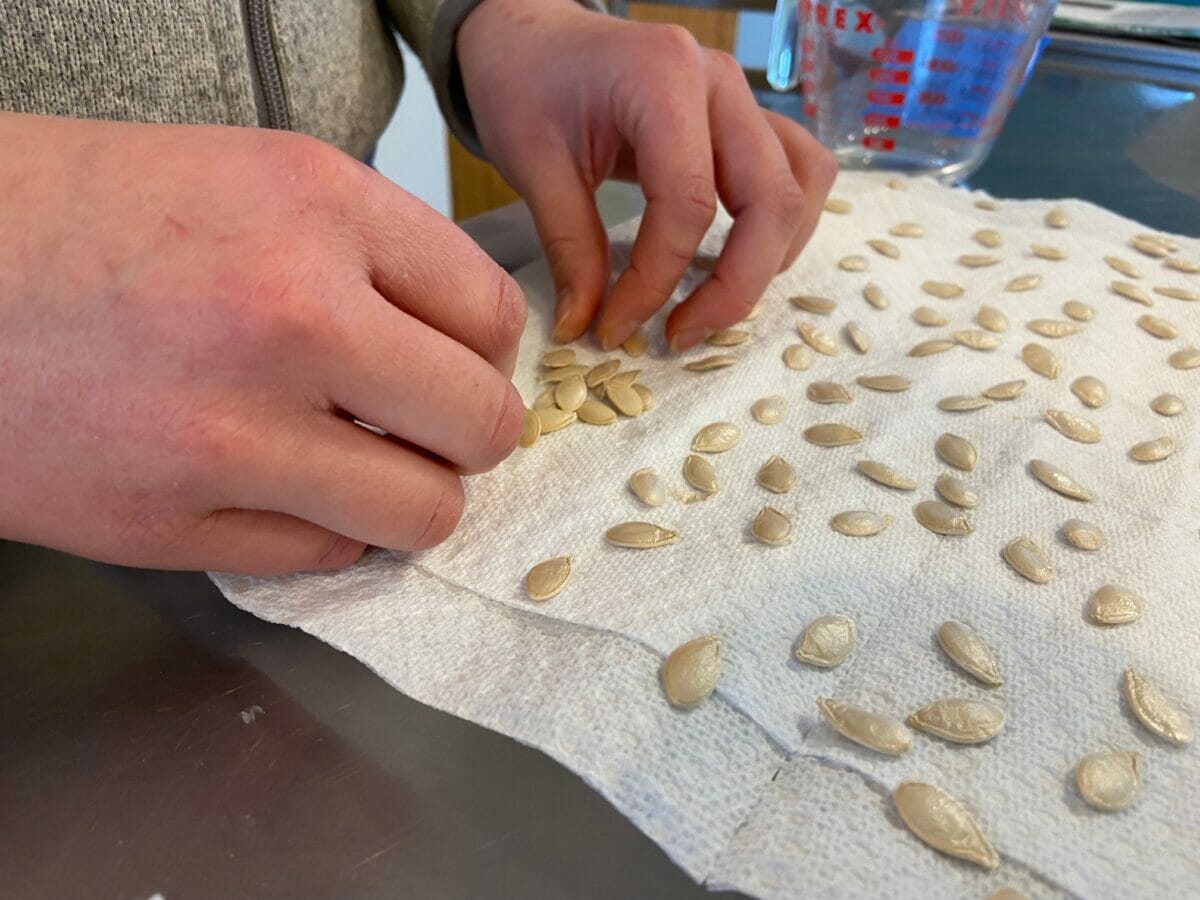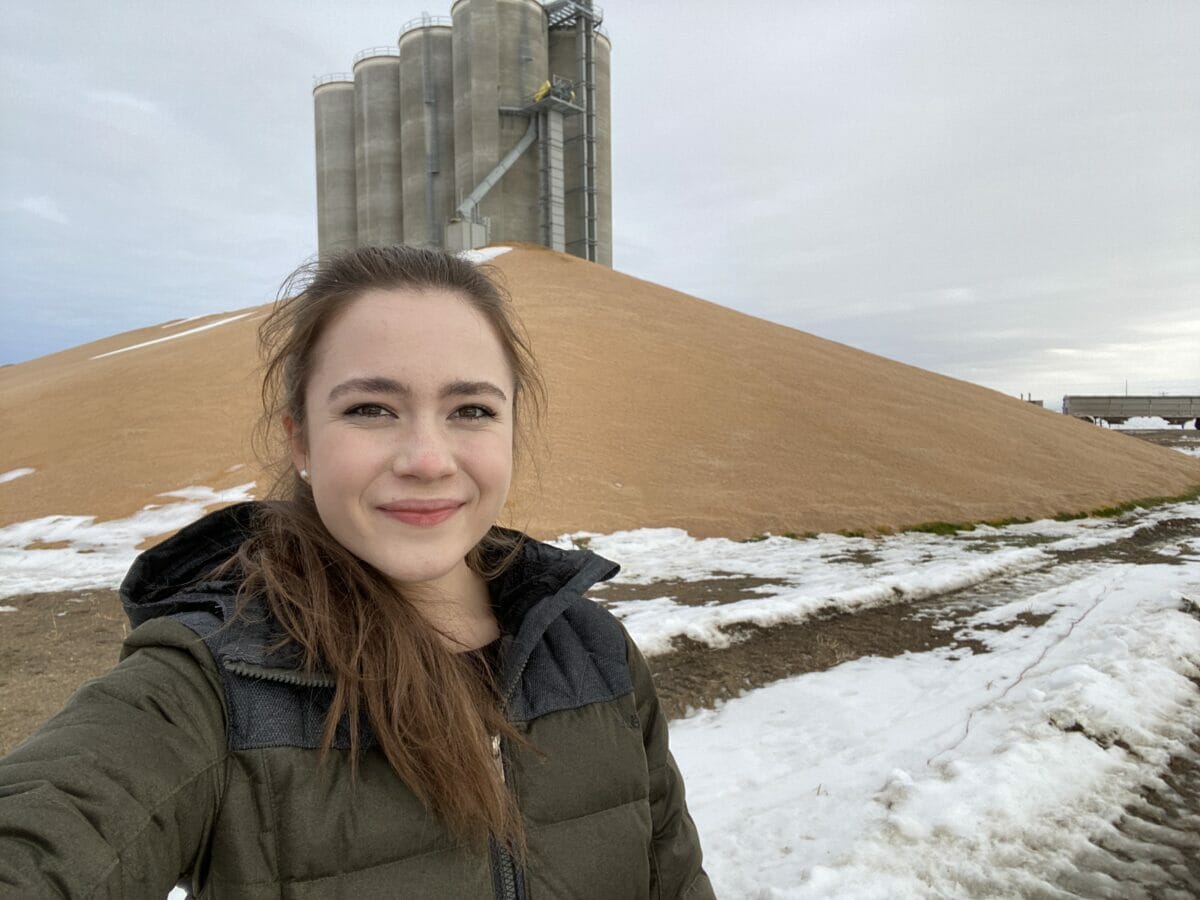What Do Farmers Do During The Winter?
It’s not an off-season, that’s for sure, but many producers say winter work has become increasingly important.
What Do Farmers Do During The Winter?
It’s not an off-season, that’s for sure, but many producers say winter work has become increasingly important.

Snow on the ground does not mean it's down time.courtesy of Kate Stephens.
To those living on the periphery of the food and the farming world, winter’s toll on the land may seem like an opportunity for producers to take a long nap and rest before the ground thaws and it’s time to grow again. The truth? It’s anything but that.
Most farms across the country reserve the coldest months of the year to get on track for the next season. Twenty-five miles northeast of Minneapolis in Hugo, Minnesota, snow falls across 30 acres of carefully planted cover crops. The property, which will lay dormant for the next three months, belongs to Dream of Wild Health, a nonprofit dedicated to advancing Indigenous food sovereignty.
Despite the farm’s empty fields, farm manager and seed keeper Jessika Greendeer takes comfort in the seasonal off-pasture opportunities. “Now we go behind the scenes, to do the real work and shape what the future looks like,” she says. “This time of year, I am reminded that this is my dream job, carrying on the work of my people, my ancestors, and other ancestral relatives who did this work for us.”

The work Greendeer will do this winter consists of stripping, drying, threshing, hanging, cleaning and storing seed varieties of squash, beans, corn and sunflowers that local Indigenous communities have relied on for millennia. This process, she says, is also shared with youth who participate in their education programs. Next month, eight Indigenous farmers will start working on a new incubator growing initiative on the farm. The first few months will consist of classroom work on agriculture and culinary practices before the farmers break ground in spring.
Time for Administrative Tasks
Many experts in agriculture, including Craig Askim, an extension agent at North Dakota State University in Mercer County, agree that winter work is just as important to a farm’s success as the months spent out in the field.
“How you decide to spend the next 30 to 60 days can really be make or break,” Askim says. “About 50 percent of the net profitability of farms and ranches in North Dakota, and I will go as far to say the Midwest, occurs in the winter months, based upon the decisions they make.”
In the Midwest, this year’s drought took its toll on everything from corn, grain, soybeans and wheat crop, while farmers also grappled and continue to grapple with soaring fertilizer profits, Askim explains it will be especially important for farmers to focus on how they can turn a profit and prevent future loss. This could consist of tasks like making sure producers take advantage of tax credits, marketing product or establishing agreements with potential buyers. Other proactive measures are just as important, he adds, ensuring livestock are in good health and up to date on their vaccinations, or researching better crop management strategies to navigate future climate stressors.
For Kate Stephens, those duties are an integral part of winter farm work. The fourth-generation farmer, based outside of Great Falls, Montana, will be helping her father and grandfather haul bushels of grain to nearby elevators over the next few months.

“It’s how we turn that crop into dollars. It’s the only season where we aren’t having to tend to the crops,” she says. “My family’s farm was homesteaded in 1912 and passed down through the family since then. In order to keep small family farms like ours alive, I’m understanding that with a lot of stuff that’s been happening lately, what we do during the winter season is more important than ever.”
According to Stephens, around 95 percent of the family’s spring wheat crop yield was decimated by burrowing sawflies in 2021. Unsurprisingly, she adds, drought was also an issue that dented supply. To try and build more resilience on their land, Stephens, along with her father and grandfather, will be mulling over past data and crop maps to determine what varieties should be planted and where. Decisions around effective pest response—if and when pesky critters strike—will also have to be made, she says.
Planting Seeds for the Future
Mirabai Collins and Malcolm Hoover haven’t been grounded in the tradition of winter work for as long as the Stephens family. The Portland, Oregon couple just started their 1.15-acre operation, Black Futures Farm, in 2020. Yet they already have a lengthy winter to-do list filled with tasks that will help expand and strengthen their urban farm’s presence.

Those tasks include completing grant applications and developing connections with other organizations and businesses. The couple plans to travel to universities and colleges with notable agriculture programs to meet with faculty, as well as visit farms in Hawaii, California and across the South to mine for ideas they can implement at home in Portland.
“Our explicit purpose is to reconnect Black people to the land, and so everything we do is of service to that,” Hoover says. “This is not a Malcolm and Mirabai venture. This is something we’re creating for the community…We’re trying to establish effective pathways, laying the groundwork for more people to do this work.”
The couple, who are also interested in implementing a number of clean energy practices, say a lot of their meetings and outreach will be focused on building out that vision to become a model farm in the face of climate change.
It doesn’t matter if a farm is one acre, 100 acres or 10,000 acres. For those dedicating their lives to putting food on other tables, below zero temperatures, frost and blustering winds are not invitations to hibernate. For farmers, winter serves as a reminder to tend to the tasks that will help them reach their goals—whether they be social, environmental or economic—in the seasons to come.
Follow us
This work is licensed under a Creative Commons Attribution-NoDerivatives 4.0 International License.
Want to republish a Modern Farmer story?
We are happy for Modern Farmer stories to be shared, and encourage you to republish our articles for your audience. When doing so, we ask that you follow these guidelines:
Please credit us and our writers
For the author byline, please use “Author Name, Modern Farmer.” At the top of our stories, if on the web, please include this text and link: “This story was originally published by Modern Farmer.”
Please make sure to include a link back to either our home page or the article URL.
At the bottom of the story, please include the following text:
“Modern Farmer is a nonprofit initiative dedicated to raising awareness and catalyzing action at the intersection of food, agriculture, and society. Read more at <link>Modern Farmer</link>.”
Use our widget
We’d like to be able to track our stories, so we ask that if you republish our content, you do so using our widget (located on the left hand side of the article). The HTML code has a built-in tracker that tells us the data and domain where the story was published, as well as view counts.
Check the image requirements
It’s your responsibility to confirm you're licensed to republish images in our articles. Some images, such as those from commercial providers, don't allow their images to be republished without permission or payment. Copyright terms are generally listed in the image caption and attribution. You are welcome to omit our images or substitute with your own. Charts and interactive graphics follow the same rules.
Don’t change too much. Or, ask us first.
Articles must be republished in their entirety. It’s okay to change references to time (“today” to “yesterday”) or location (“Iowa City, IA” to “here”). But please keep everything else the same.
If you feel strongly that a more material edit needs to be made, get in touch with us at [email protected]. We’re happy to discuss it with the original author, but we must have prior approval for changes before publication.
Special cases
Extracts. You may run the first few lines or paragraphs of the article and then say: “Read the full article at Modern Farmer” with a link back to the original article.
Quotes. You may quote authors provided you include a link back to the article URL.
Translations. These require writer approval. To inquire about translation of a Modern Farmer article, contact us at [email protected]
Signed consent / copyright release forms. These are not required, provided you are following these guidelines.
Print. Articles can be republished in print under these same rules, with the exception that you do not need to include the links.
Tag us
When sharing the story on social media, please tag us using the following: - Twitter (@ModFarm) - Facebook (@ModernFarmerMedia) - Instagram (@modfarm)
Use our content respectfully
Modern Farmer is a nonprofit and as such we share our content for free and in good faith in order to reach new audiences. Respectfully,
No selling ads against our stories. It’s okay to put our stories on pages with ads.
Don’t republish our material wholesale, or automatically; you need to select stories to be republished individually.
You have no rights to sell, license, syndicate, or otherwise represent yourself as the authorized owner of our material to any third parties. This means that you cannot actively publish or submit our work for syndication to third party platforms or apps like Apple News or Google News. We understand that publishers cannot fully control when certain third parties automatically summarize or crawl content from publishers’ own sites.
Keep in touch
We want to hear from you if you love Modern Farmer content, have a collaboration idea, or anything else to share. As a nonprofit outlet, we work in service of our community and are always open to comments, feedback, and ideas. Contact us at [email protected].by Lindsay Campbell, Modern Farmer
December 25, 2021
Modern Farmer Weekly
Solutions Hub
Innovations, ideas and inspiration. Actionable solutions for a resilient food system.
ExploreExplore other topics
Share With Us
We want to hear from Modern Farmer readers who have thoughtful commentary, actionable solutions, or helpful ideas to share.
SubmitNecessary cookies are absolutely essential for the website to function properly. This category only includes cookies that ensures basic functionalities and security features of the website. These cookies do not store any personal information.
Any cookies that may not be particularly necessary for the website to function and are used specifically to collect user personal data via analytics, ads, other embedded contents are termed as non-necessary cookies.
We raise organic blueberries so we prune all winter. Sometimes standing in cold water. When snow makes that impossible, we clean the barn. Truth is, farming is infinite. There’s no end to things to do. The trick is learning how to say “That’s enough for now.”
Best of luck and best wishes to all these farmers. Indeed, winter is the time to prepare for spring. The cycle never ends.
I didn’t see one of the most important jobs that must be done during the winter, and that is machinery and tool maintenance and repair. I know that this must be of upmost importance to any farmer, as it is to me, so why is there no mention of it here?